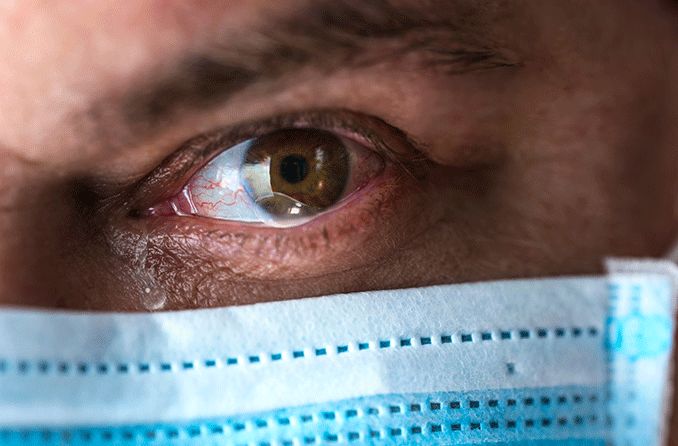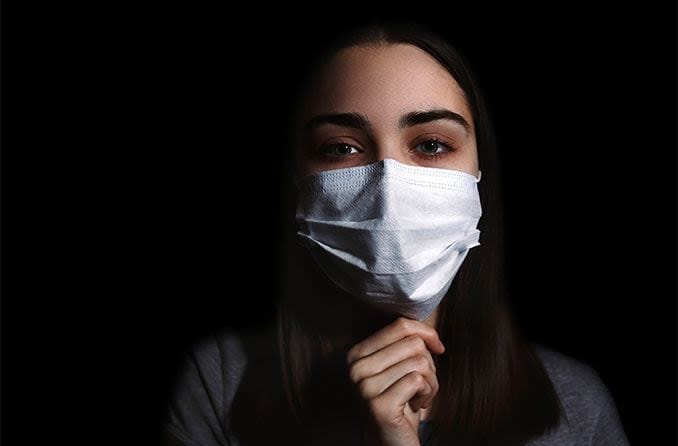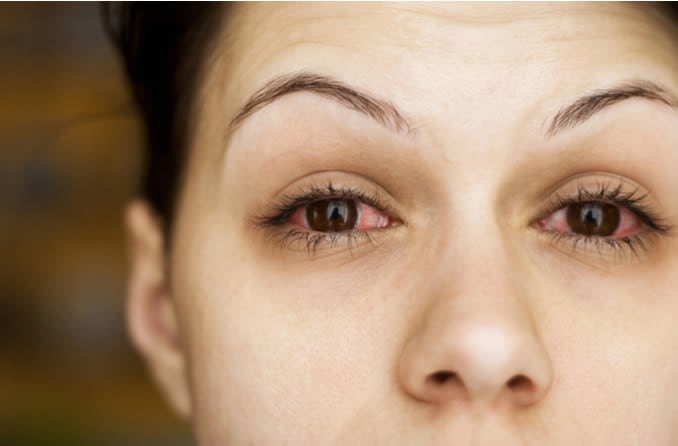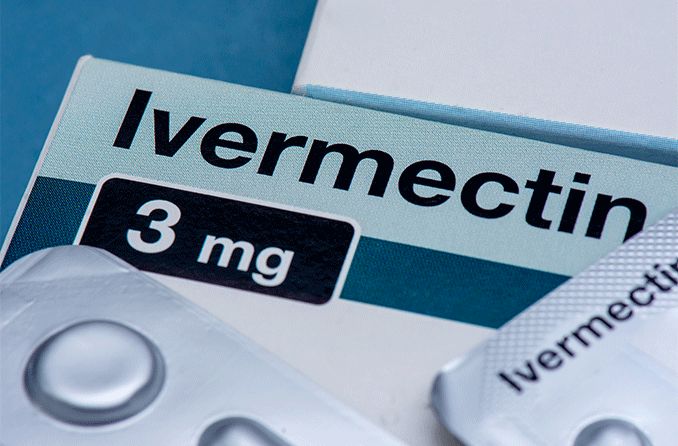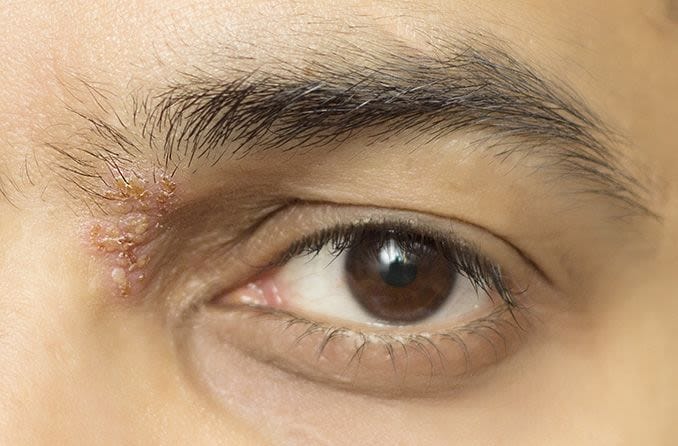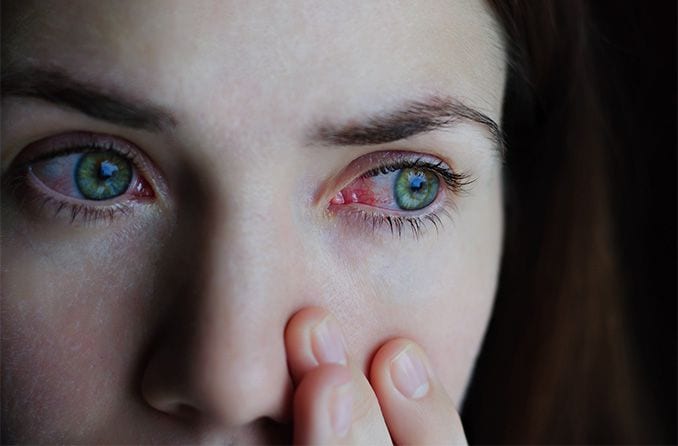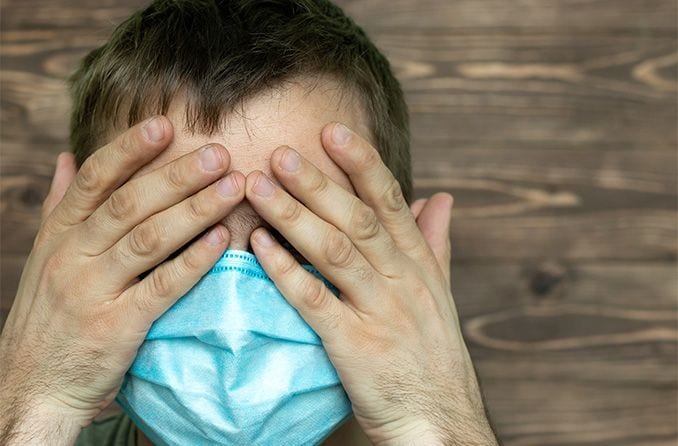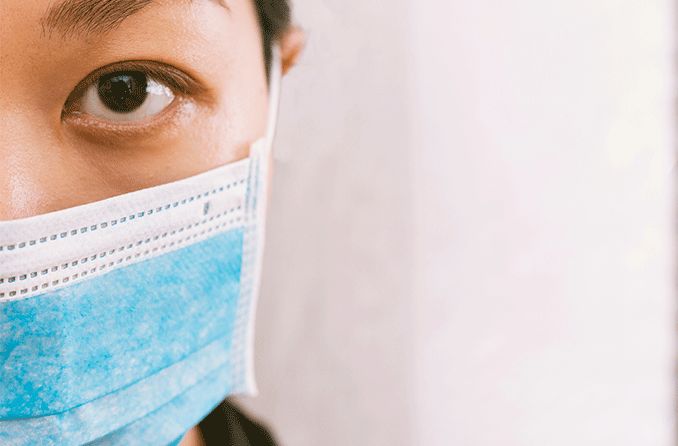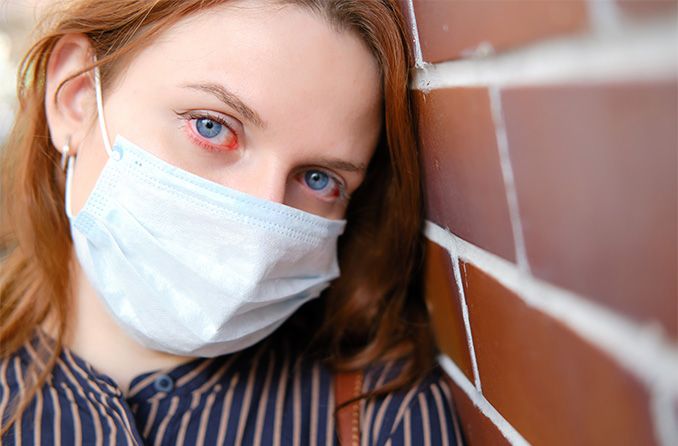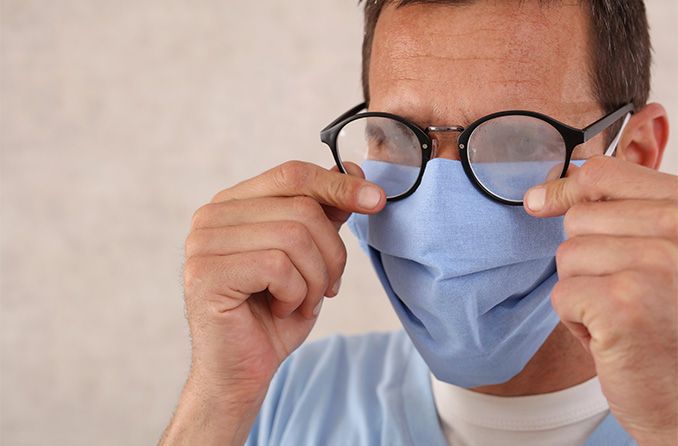Could your face mask be the cause of your eye problems?
Face masks have become a part of daily life over the course of the COVID-19 pandemic. And while they help keep you healthier overall, eye doctors are seeing some issues. They have reported an uptick in cases of dry eye, styes and other eye problems that may be related to wearing face masks.
In fact, MADE (mask-associated dry eye) was coined as the condition has become a frequent complaint among eye care patients.
Fortunately, these eye issues are easily treatable. Not to mention, you can reduce your risk of mask-related eye issues by wearing your mask properly and following advice from your eye doctor.
Dry eyes and face masks
Dry eyes are a common eye problem that may be caused or worsened by a variety of factors. These include age, environmental factors, medications and face masks.
You may deal with dry eyes or dry eye disease (DED) due to not having enough tears or having issues with the quality of your tear film. This film consists of water, oils and mucus. And each of these components plays an important role in keeping your eyes moist.
How do masks cause dry eyes? Eye doctors believe that air leaking upward toward the eyes from the top of the mask causes the tear film to evaporate more quickly. This may result in dry, inflamed and irritated eyes.
Mask wear may cause dry eyes or exacerbate an existing case of DED. Symptoms of dry eyes may include blurry vision, burning eyes, mucus, redness and sensitivity to light.
Factors that may put patients at higher risk for dry eye from face masks may include:
- Contact lens use
- Older age
- Immunocompromised status
- Extended mask wear
Health care providers and others who wear masks constantly for many hours at a time may be at a higher risk of mask-associated dry eye.
Treatments for dry eye include warm compresses, over-the-counter artificial tears or prescription eye drops to increase tear production. In some cases, an eye doctor may recommend a procedure to block or plug the tear ducts to keep your eyes moist.
Eye styes and face masks
An eye stye (hordeolum) is a bump near the eyelashes or on the inside of the eyelid typically due to a bacterial infection.
Mask wear may increase the risk of styes by introducing more bacteria into the eyes. This can happen when breath containing bacteria blows up from the top of the mask toward the eyes. Germs may also be spread from the hands to the eyes when you adjust, put on or take off a face mask.
Another type of eyelid bump, called a chalazion, may also be caused by wearing a mask. A chalazion, usually caused by a clogged oil gland, may begin as a stye and then grow.
Your eye doctor may recommend using antiseptic mouthwash to reduce the amount of bacteria in the mouth and in the breath. Along with good eyelid hygiene, regular hand washing and proper mask wear may help to prevent eye styes.
Treatments for eye styes include: clean, warm compresses; massaging the area; and if necessary, antibiotics. More extreme cases may require steroid shots for swelling or an in-office procedure to drain the stye.
Blepharitis and face masks
Eye doctors have also noted an increase in cases of blepharitis that may be related to wearing face masks. As with styes, blepharitis can be caused by bacteria-filled air being blown over the surface of the eye.
Blepharitis is an eye issue that causes redness, inflammation, swelling and flaky skin on the eyelids. Blepharitis can also lead to other eye problems associated with extended or improper mask wear, including dry eye and styes.
The treatment for blepharitis typically includes eye drops and proper eyelid hygiene, which should involve regularly cleaning the eyelids with a mild cleanser. Your eye doctor may also prescribe an antibiotic for blepharitis caused by bacteria.
How to wear a face mask properly
Make sure your mask fits snugly and that you’re wearing it correctly to reduce your risk of developing mask-associated dry eye and other eye problems.
Here are three tips to reduce your risk of face mask eye issues:
- Adjust your mask for a good fit. Use a mask that has nose wire, which can be shaped tightly to your nose. This prevents air from leaking upward toward your eyes when you breathe. You can also use double-sided tape on the top part of your mask for an even better seal.
- Give your eyes some room. Avoid wearing your mask too high or too close to your eyes. If the mask sits on the lower eyelid too close to the eye, it can interfere with eyelid function. It may also introduce bacteria into the eyes and even cause corneal abrasions.
- Take regular mask breaks. If you wear a mask all day, step outside or to a space away from others to take off your mask for a few minutes every couple of hours.
A bonus tip for glasses wearers: Using a snug-fitting mask may also help to avoid annoying foggy glasses caused by your mask.
See your eye doctor for eye problems caused by masks
See your eye doctor for an eye exam and treatment for any eye issues that may have been caused by extended or improper mask wear. The treatment will depend on the specific eye issue.
You should still continue to wear a face mask to protect yourself and others against COVID-19. And your eye doctor can also give you guidance on wearing your mask properly to prevent mask-related eye issues in the future.
